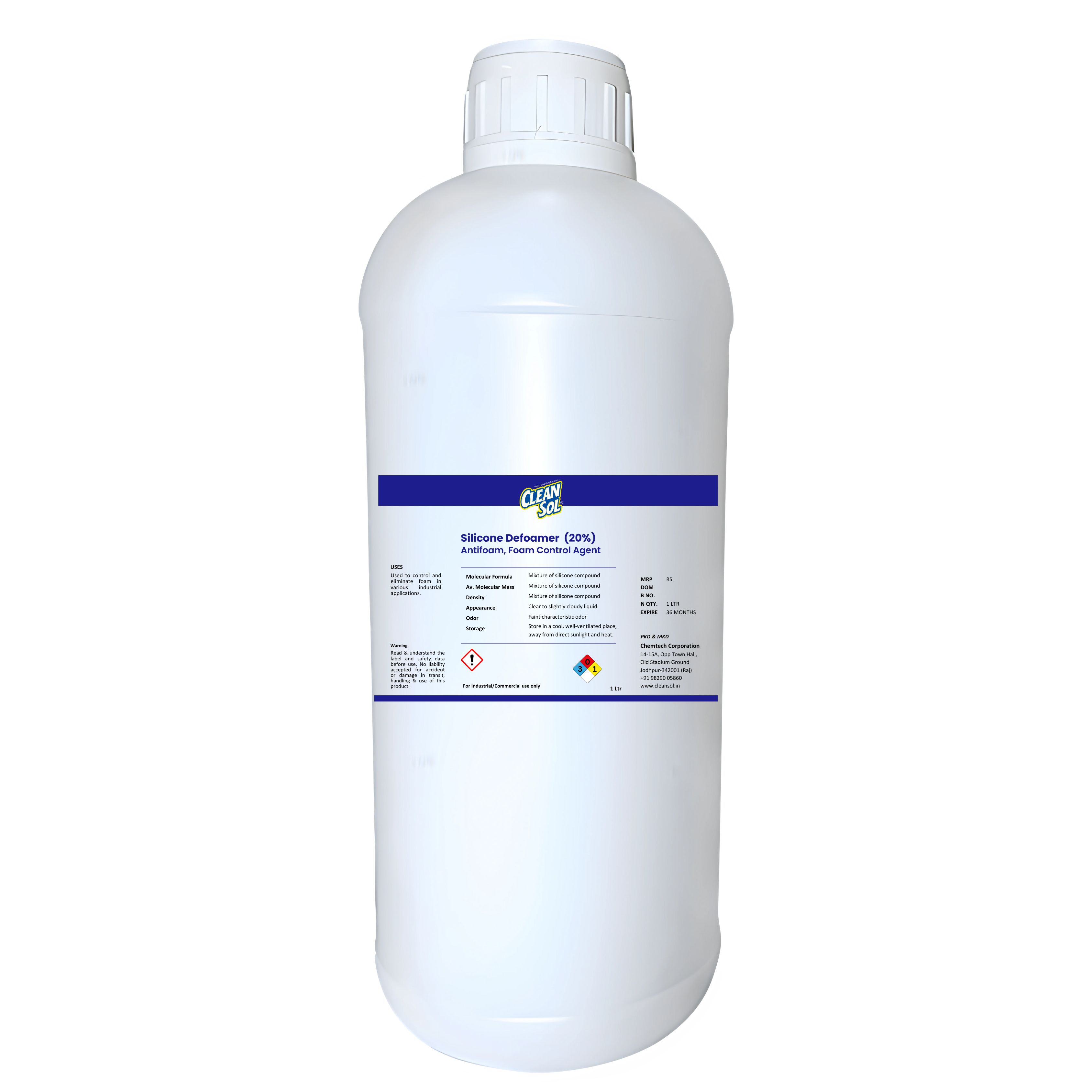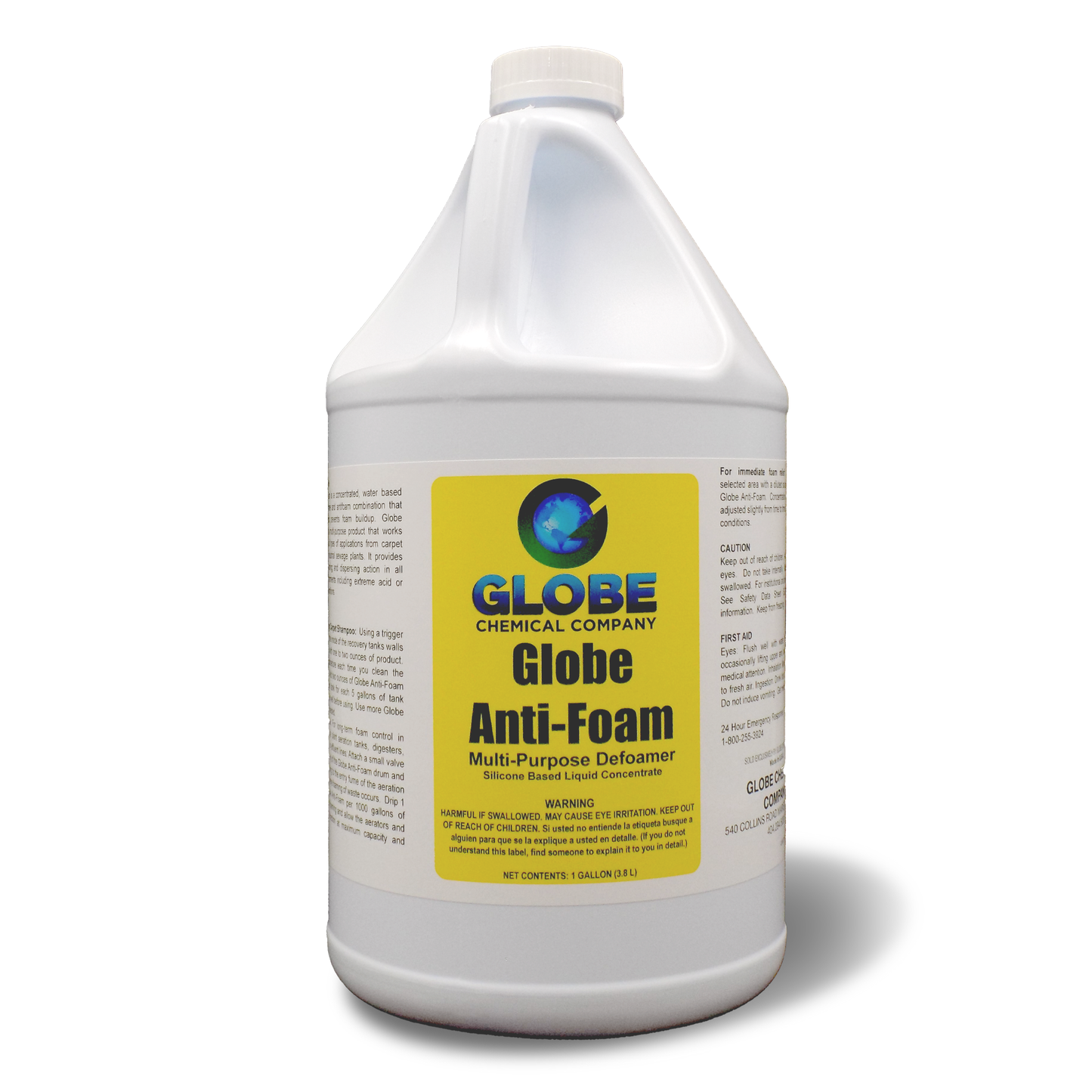Ideal Practices for Choosing the Right Anti-Foam Control Option for Your Needs
Choosing an effective anti-foam control option necessitates a detailed evaluation of your special functional requirements. Key factors to consider include the particular residential or commercial properties of your procedure, such as temperature, chemical, and ph communications, all of which considerably affect the efficiency of defoaming agents. Making sure compatibility with the tool and sticking to regulatory standards are crucial for effective execution. As we explore these crucial aspects, it ends up being obvious that the best choices can bring about not only immediate benefits yet additionally lasting operational improvements that call for additional assessment.
Understand Your Foam Problem
Regularly, companies come across foam-related problems that can hinder functional effectiveness and product quality. Foam development can happen during various procedures, including blending, fermenting, and transportation, and it frequently leads to tools ineffectiveness, production downtime, and raised functional costs. Recognizing the underlying sources of foam generation is essential for dealing with the issue effectively.
Foam can emerge from a number of factors, such as the nature of the products included, frustration levels, temperature level variations, and chain reactions. For example, particular surfactants can worsen foaming, while high shear blending can introduce air, causing unwanted foam accumulation. Additionally, ecological problems and the particular features of the liquid systems being used can significantly affect foam actions.
Identifying the type of foam-- whether it is secure or unstable-- is also necessary. Secure foam tends to continue longer and is extra challenging to handle, while unstable foam might dissipate more easily. Anti-Foam Control Solutions. By examining these variables, companies can gain insights into their foam problems, allowing them to develop targeted techniques to alleviate foam formation and boost general procedure efficiency. This fundamental understanding is important for choosing a suitable anti-foam control option customized to details operational requirements.
Examine Anti-Foam Options
When taking into consideration anti-foam options, it is necessary to completely assess the various formulations available on the marketplace to find the most ideal remedy for your details foam-related obstacles. Anti-foam representatives been available in diverse types, consisting of silicone-based, non-silicone, and all-natural formulations, each offering distinct homes and performance qualities.
Begin by assessing the details application needs, such as temperature level thresholds, pH degrees, and the kind of foam being generated. For instance, silicone-based representatives are understood for their effectiveness in high-temperature environments, while non-silicone alternatives may be more suitable in food handling applications because of regulatory factors to consider.
It is also critical to think about the price of application and the preferred durability of the foam control. Some formulas might offer prompt defoaming action, while others offer extended security. Carrying out small tests can give insights into the effectiveness of each choice in real-world problems.
Consider Application Compatibility
In the realm of anti-foam services, guaranteeing application compatibility is critical for achieving optimal efficiency. The performance of an anti-foam representative mainly depends upon its ability to operate sympathetically within the particular parameters of your application, consisting of temperature level, pH, and the existence of other chemicals. Various formulas may execute variably throughout diverse problems, therefore extensive testing is crucial.
Begin by determining the qualities of your procedure, such as viscosity and the nature of the tool in which the anti-foam will be used. For circumstances, investigate this site some anti-foam agents might work well in liquid services yet stop working in organic solvents. Additionally, think about the potential communications with existing ingredients and products to stay clear of unfavorable results.
It is also vital to assess the approach of application. Whether the anti-foam is introduced constantly or batch-wise can affect its effectiveness and long life in the system. Ensure that the selected item is not just compatible with the operational criteria but likewise straightens with any regulative needs important read this article to your sector.
Assess Environmental Impact
Exactly how does the ecological effect of an anti-foam control remedy influence your general option procedure? The ecological footprint of your selected anti-foam representative is paramount, as it shows your dedication to sustainability and governing conformity. Choosing an item with marginal ecological repercussions can improve your business picture and foster consumer trust.
When evaluating environmental effect, take into consideration the biodegradability of the anti-foam remedy. Eco-friendly choices are generally better, as they damage down much more swiftly and lower lasting ecological harm. Additionally, assess the capacity for bioaccumulation and toxicity to aquatic life. Solutions with high toxicity can position significant risks to local environments, potentially leading to regulative penalties and ecological destruction.
An additional essential factor is the presence of unsafe materials. Anti-foams including hazardous chemicals might require special delivery and disposal procedures, boosting operational costs and making complex conformity with environmental regulations. Selecting environmentally friendly alternatives can alleviate these risks.
Display and Enhance Efficiency
To make best use of the efficiency of your anti-foam control solution, it is necessary to on a regular basis monitor and maximize its performance. Constant evaluation enables the recognition of any variances in foam levels and the succeeding effectiveness of the anti-foam representative.
Apply a methodical strategy to keep track of vital performance signs (KPIs), such as foam quantity, stability, and the reaction time of the anti-foam representative. Utilize analytical devices and strategies, such as visual assessments, foam elevation measurements, and specialized sensors, to gather exact information.

In addition, preserve open interaction with providers for technological support and understandings on the most recent innovations in anti-foam technology. This proactive strategy not only aids in attaining optimal efficiency yet likewise decreases operational interruptions and boosts overall process performance. Routinely revisiting and fine-tuning your anti-foam approach guarantees that you are successfully taking care of foam-related challenges, eventually bring about improved productivity and expense financial savings.

Final Thought
Finally, picking the suitable anti-foam control solution demands an extensive analysis of certain application needs, consisting of temperature, pH degrees, and chemical compatibility. Rigorous screening for prolonged and instant defoaming efficiency is essential, as is factor to consider of environmental effects and governing compliance. By focusing on environmentally friendly alternatives and continuously keeping an eye on performance, operational performance can be enhanced while efficiently minimizing foam-related challenges. Following these best methods will certainly facilitate educated have a peek at these guys decision-making in anti-foam control remedies.
Choosing a reliable anti-foam control remedy necessitates an extensive examination of your one-of-a-kind functional needs.In the realm of anti-foam solutions, ensuring application compatibility is critical for accomplishing ideal performance.Exactly how does the ecological effect of an anti-foam control option affect your general choice process?In final thought, choosing the proper anti-foam control option requires a detailed examination of particular application requirements, including temperature, pH levels, and chemical compatibility (Anti-Foam Control Solutions). Adhering to these ideal techniques will certainly assist in educated decision-making in anti-foam control services